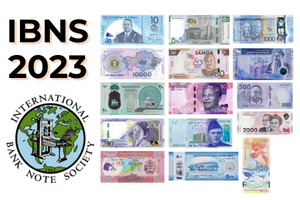Albert Peek is perhaps the most famous person in the field of banknote collecting. It was he who created the first catalog of banknotes in the whole world, which we use to this day.
Born on May 15, 1922 in the city of Cologne, Germany.
Albert Peek began to assemble his collection in 1930. He later studied philosophy, literature and history, and worked as a publishing manager until 1964, when he decided to devote himself to bonistics and the study of paper money and became a recognized expert.
Albert Peak created the first catalog in 1974.
In addition to his main work, "The Standard Catalog of the World's Paper Money," Peek published many books, for which he received several international awards.
When his private collection of (at the time) 180,000 banknotes became too large for a private collector, it was transferred to BayerischeHypotheken - and Wechselbank (now Unicredit Bank). Albert continued to expand the collection between 1964 and 1985 as a curator in the bank's service.
Died November 22, 2015 in Garmisch-Partenkirchen, Germany.
About the catalog:
The Standard Catalog of the Paper Money of the World is a well-known catalog of banknotes published by Krause in three volumes.
These catalogs are well known in the numismatic trade as Peake's catalogs, as the numbering system was invented by Albert Peake. Since the mid-1980s, the rights to these catalogs have been owned by the Krause publishing house, where they have been published since 1994 under the editorship of George S. Kyugage.
Catalog numbering system:
The numbering system uses capital letters (eg 'P', 'PS', 'PM') and an integer to identify the record. If the entry has different variants of the signature or date, a lowercase letter is added (eg P120a). If the number to be added and the section are not updated, then a capital letter is used at the end (eg P120A).
Vitalii Cherniuk

























